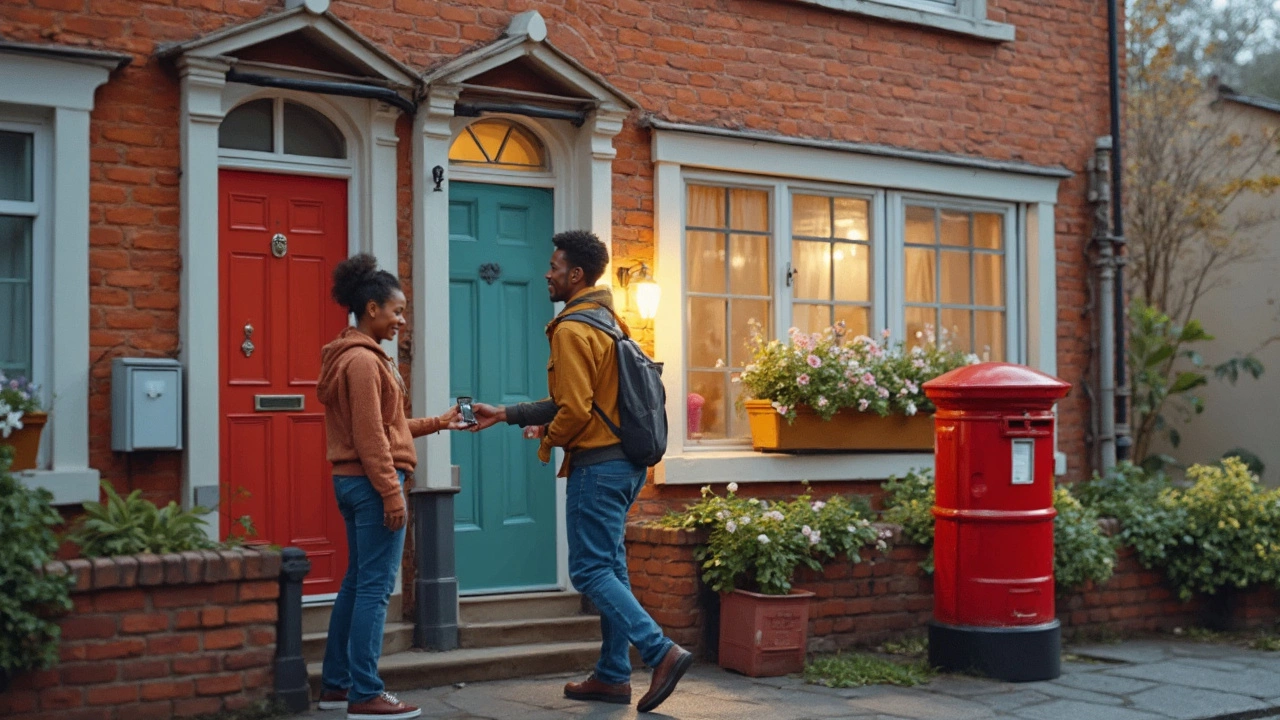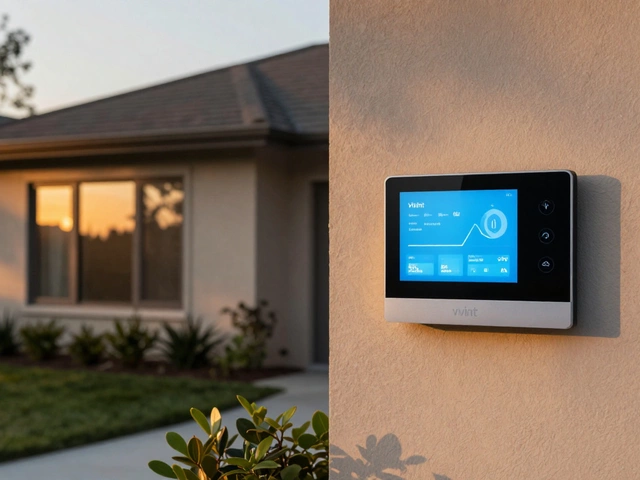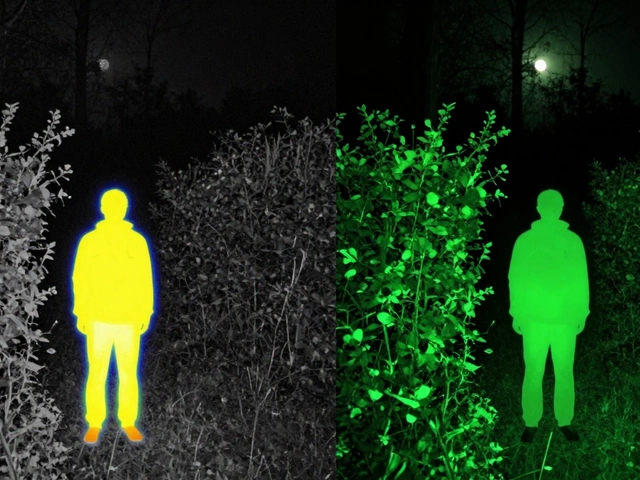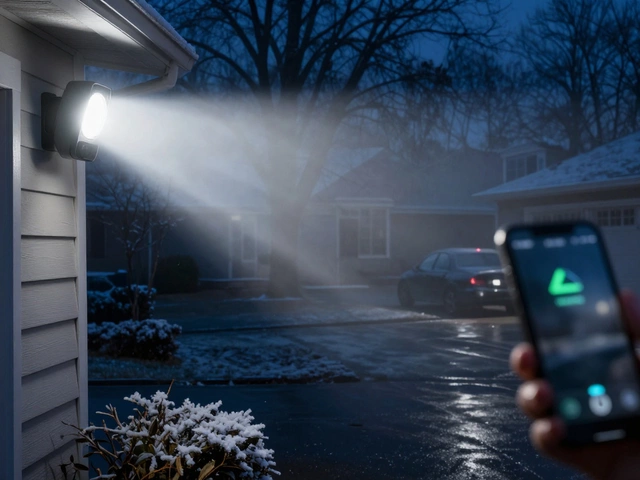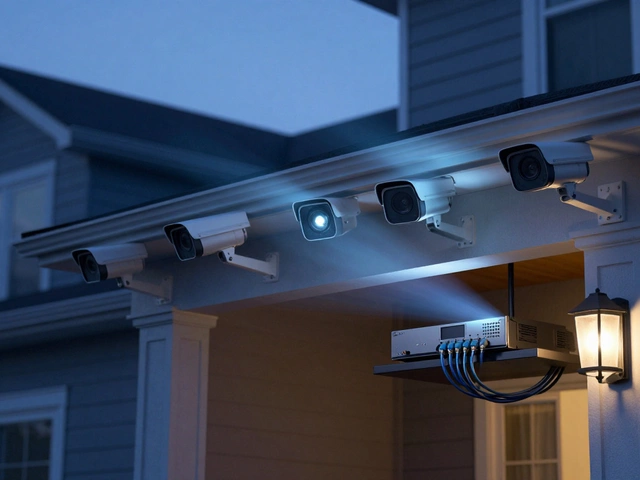If you’ve ever missed a delivery or wanted to know who’s at your door without actually getting off the sofa, you’ve probably thought about smart doorbells. Ring has taken over front doors across the UK, but what’s really going on behind that little glowing button?
First off, Ring doorbells are basically tiny security cameras built into what looks like a normal doorbell. When someone presses the button—or even just walks up close—the device wakes up, records video, and pings your phone or tablet. You see what’s going on in real-time, whether you’re upstairs, at work, or halfway across the country. A lot of folks use this to shout instructions to the postie through the speaker, or just quietly check out who keeps leaving those weird flyers.
No hardwiring needed for most models—just stick it next to your door and connect it to your WiFi. Installation usually takes less than an hour, and the app walks you through setting up everything. The video quality is sharp (most offer HD), and if you want, you can pay for cloud storage to save clips and look back later. That means you don’t just watch things live; you’ve got proof if someone snoops around while you’re away.
- What Exactly Is a Ring Doorbell?
- How Does Ring Work in the UK?
- Ring Features and Practical Tips
- Privacy, Recording, and UK Laws
What Exactly Is a Ring Doorbell?
A Ring doorbell is like a mix of a regular doorbell, a video camera, and a walkie-talkie—all packed into one small gadget. At its core, it’s made to show you who’s at your door and let you talk to them, without you needing to actually open the door or even be at home. Ring is a big deal in the Ring doorbell UK market because it’s easy to set up and works straight out of the box with most UK homes.
You get two main options: battery-powered models that stick right to your doorframe, and wired versions that use your existing doorbell wires. Both have HD cameras—usually 1080p—built-in microphones, speakers, and a button for guests to press. When someone moves in front of the doorbell, it uses motion sensors to kick on the camera and send a notification to your phone, tablet, Alexa device, or even selected smart TVs.
Here’s a quick rundown of what you actually get with a typical Ring video doorbell:
- HD camera with night vision for round-the-clock footage
- PIR (passive infrared) sensor for motion detection
- Built-in speaker and mic for talking back and forth
- App for iOS, Android, and most tablets
- Option to record clips, either to your device or the cloud (if you subscribe)
The whole idea is to give you more control and peace of mind. As the folks from Which? put it,
“Video doorbells like Ring are great for convenience, improving home security and letting you see, speak to, and even record visitors—whether you’re at home or thousands of miles away.”
No surprise then, Ring doorbells caught on so fast in the UK, especially since you don’t need to be techy to get one working and there’s no big mess with wires or drilling.
How Does Ring Work in the UK?
Alright, here’s where it gets interesting. The Ring doorbell UK setup isn’t much different from what’s sold in other countries, but there are a few details that matter if you’re on this side of the Atlantic. Every device connects via WiFi, so your internet speed and reliability make a huge difference. Below 2 Mbps upload speed? You’ll get grainy video or laggy notifications. Run a quick internet speed test if you’re not sure.
Once you install the Ring (either hardwired to your old chime or running it on its own rechargeable battery), you use the Ring app. It works on both iOS and Android phones and gives you control over everything—from checking live video to changing motion sensitivity so every cat strolling down your drive doesn’t set it off.
- Motion Zones: Customise exactly where the camera looks for movement. Draw a box on your screen to ignore the pavement if you live on a busy street.
- Notifications: Push alerts pop up on your phone instantly when something happens. You can also set schedules if you don’t want pings late at night.
- Two-way Audio: Speak to whoever’s at the door, whether you’re home or not.
| Feature | Details (UK) |
|---|---|
| Power Options | Hardwired (to 8-24V chimes) or rechargeable battery; UK plugs included |
| Network | 2.4GHz WiFi (some models also use 5GHz) |
| App Compatibility | iOS & Android |
| Video Storage | 30-day rolling cloud history (with Ring Protect subscription) |
One thing you'll notice: UK consumer laws mean you get at least a 1-year warranty, and if it’s faulty you’re usually covered for a straight swap. Don’t forget power adapters are the UK three-pin type, not the US flat ones, so no awkward converters needed.
Data storage for recorded footage happens in Amazon’s cloud servers, and yes, they’re GDPR compliant—so your clips aren’t getting shipped to random corners of the world. Just remember, if you want recordings saved, you’ll need the paid Ring Protect plan—without it, you’ll only see live views and can’t rewatch old videos.
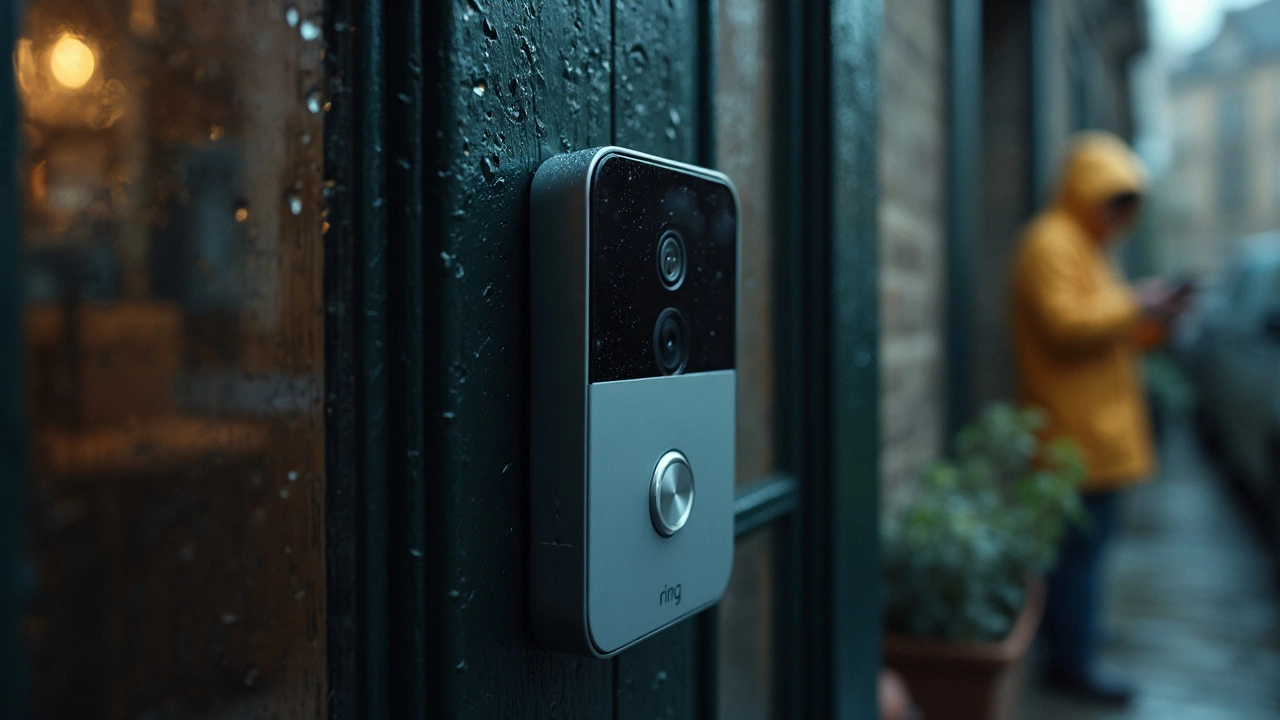
Ring Features and Practical Tips
If you’re picking out a smart doorbell for your UK home, it’s worth knowing what features actually make a difference day-to-day. The Ring doorbell UK models all come with high-definition video, so you’re not squinting to figure out who’s at the door. Even the entry-level Ring Video Doorbell offers 1080p HD video, while some pricier models throw in “head-to-toe” viewing so you see parcels left by your feet.
Two-way audio lets you talk to people outside—even if you’re miles away. Need to tell your mate you’re running late, or ask a delivery driver to chuck the parcel behind the bin? Just tap your phone. Night vision means it works after dark, not just on sunny afternoons. Motion detection is customisable too, so you get alerts for the garden gate but not every bus driving by.
Here’s a quick comparison of key Ring features from the most popular UK models:
| Model | HD Video | Power Source | Custom Zones | Works with Alexa |
|---|---|---|---|---|
| Video Doorbell (2nd Gen) | Yes (1080p) | Battery or hardwired | Yes | Yes |
| Video Doorbell 4 | Yes (1080p) | Quick-release battery | Yes (pre-roll video) | Yes |
| Video Doorbell Pro 2 | Yes (1536p) | Hardwired | Yes (3D Motion Detection) | Yes |
Some handy tips:
- Use custom motion zones and notification settings to avoid constant pings every time a car drives by your street.
- If WiFi is weak at your front door (which is super common with thick old UK walls), consider a WiFi extender or a Ring Chime Pro to keep your video streaming smooth.
- Battery models work well if you’re renting or don’t want to mess with wiring—but keep a spare battery charged so you’re never left with a dead doorbell.
- You can share access with family members through the app, so everyone gets alerts and can answer the door—even from their own phones.
- Pair with Amazon Alexa to get doorbell announcements in the house, even if your phone is somewhere else.
One more thing: Ring offers optional cloud recording, called Ring Protect, starting at £3.49 per month for a single device. This is the only way to save and review past footage. Many UK homeowners sign up after seeing how handy it is for catching missed deliveries or, in one real case, helping police spot a suspicious visitor.
Privacy, Recording, and UK Laws
There’s a bit more to setting up your Ring doorbell in the UK than just sticking it next to your front door. If your device records places outside your private property—like pavements or your neighbour’s garden—you actually have to follow UK privacy law, mainly the Data Protection Act 2018 and GDPR.
Here’s the big thing: as soon as your Ring doorbell UK captures anyone outside your property, you become a “data controller.” That means you’re legally responsible for keeping that footage safe, sharing it only with the right people (think police, not just anyone), and deleting it when you don’t need it. If you’re just recording your own porch and no one else’s property, you’re fine and don’t have to jump through extra hoops.
- Put up a clear sign. If your camera covers shared spaces or other people’s homes, slap up a notice: "CCTV in operation for security purposes." People should know they’re on camera.
- Don’t overshare. Only keep recordings you actually need. Most experts suggest setting video storage times to the shortest useful window—30 days is a popular limit.
- Respect privacy. If a neighbour asks not to be included on your camera, see if you can angle it differently. That’s the neighbourly—and legally safe—move.
- Handle requests. If someone wants access to footage you’ve captured of them, you have to let them see it (unless it messes with someone else’s privacy or an investigation, for example).
The Information Commissioner’s Office (ICO) actually received a flood of complaints when home camera use shot up in 2023. People were worried about privacy creeping away. And in one famous case in Oxford, a Ring owner was ordered to pay damages after the court found his camera invaded his neighbour’s privacy. So yeah, the rules are getting stricter, and courts take it seriously.
| Privacy Issue | Legal Requirement |
|---|---|
| Recording outside property | Comply with GDPR and Data Protection Act |
| Keeping videos | Store only as long as necessary |
| Responding to access requests | Provide footage if requested, within one month |
| Notifying others | Put up visible signs if recording public areas |
One last tip—use the privacy settings in the Ring app. Set up “privacy zones” so your camera only records your property. That way you can keep your home secure and not get tangled up in legal headaches. Keep recordings safe, don’t share them casually, and you’ll stay on the right side of UK law.

